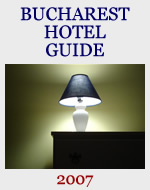Renaissance mobile
Dacia-Renault has cornered the local market in reliable, durable and value for money family cars with its Logan brand. But how do its new versions measure up? Adrian Ion tests the new Logan Diesel
|
 Romania’s car manufacturing industry is experiencing a rebirth that many would not have imagined. With the help and vision of Renault, the factory in Mioveni, Arges county, has produced a car that fills a gap in both emerging and developed markets.
Romania’s car manufacturing industry is experiencing a rebirth that many would not have imagined. With the help and vision of Renault, the factory in Mioveni, Arges county, has produced a car that fills a gap in both emerging and developed markets.
The Logan has proven to be a success in nations such as Morocco and Romania as well as France and Germany. The reason is simple – people need an affordable, reliable and spacious car to take them from A to B. The Logan proved to be just the product some people needed, so sales expectations were exceeded by far.
Dacia has since developed new versions of the Logan, with different bodies and engines. The MCV with five or seven seats continued the success of the saloon, which is now the best-selling model.
The engines also received a boost of power as the petrol versions now top 110 hp. The latest member is the 85 hp diesel, which is based on the same 1.5 litre diesel version already existing in the range with 70 hp. One can differentiate the more powerful version by the red I in the DCI description on the boot of the car. Dacia introduced this new engine to satisfy the demand for a more powerful diesel version and the company hopes this will increase the volume of diesel cars sold by more than 40 per cent.
Dacia organised a test drive trip to Sibiu aiming to prove the new diesel was just the engine the car was missing. To be honest, after driving from Bucharest to Sibiu (Dieselstadt, as Dacia called it) most of the journalists agreed that it was the more honest choice for the Logan.
There is a noticeable improvement in acceleration and overtaking capabilities of the car, as the diesel torque is available at low revs. Still, the Logan is not a sports car and one should not be too confident in driving it to the limit. The MCV version feels jumpy and the body roll during curves will temper any attempt at bravado. The saloon is easier to handle and control, so it gives more confidence when pushed a bit further.
Keeping its looks
 A redesign of the front bumper of the saloon is the only change made to the body. Overall, the Logan is well assembled. The body is rigid and the interior parts are well fixed and no rattles or unpleasant noise from moving parts will annoy the driver. The interior is huge. Five people will have no problem fitting in the car and even super-tall drivers will have headroom in the Logan. The MCV version with is tall roof-top can accommodate up to seven passengers, although the room for luggage will be drastically reduced.
A redesign of the front bumper of the saloon is the only change made to the body. Overall, the Logan is well assembled. The body is rigid and the interior parts are well fixed and no rattles or unpleasant noise from moving parts will annoy the driver. The interior is huge. Five people will have no problem fitting in the car and even super-tall drivers will have headroom in the Logan. The MCV version with is tall roof-top can accommodate up to seven passengers, although the room for luggage will be drastically reduced.
Some switches in the interior resemble a car from the 1980s and others have been made to keep the price low, such as the door handles in the interior.
The car is easy to drive, the engine response is smooth and the driver will feel at ease as soon as he or she steps inside. The dynamic performance of the 85 hp engine will top 167 km/h in the saloon and an acceleration from zero to 100 km/h in 13 seconds.
The consumption is another strong point of this version, with only 4.6 litres of diesel in mixed consumption.
Some of the cars we drove to Sibiu registered no change in the fuel indicators after 300 kilometres. Officials at Dacia ensured us there was nothing wrong with the indicators, the car just consumes very little fuel.
The new version of Dacia Logan offers a pleasant driving experience with low running and purchase costs. This is a successful recipe that other car manufacturers are now trying to replicate. Ford, please take note.
Vital statistics:
Engines: two petrol 1.4 and 1.6 and one diesel 1.5 with 70 hp and 85 hp.
Price:
starts at 6,400 Euro including VAT for the 1.4 litre and goes up to the Prestige 85 hp diesel version at 10,950 Euro including VAT.
Suitable for: people with small pockets and big families.









